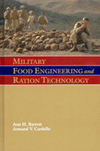Engineering R&D: Challenges in sanitary engineering

Under the direction of FMC FoodTech, which acquired Frigoscandia in 1996, an overhaul of GYRoCOMPACT spiral freezers, chillers and proofers was undertaken to address the compatibility issue and to upgrade the line to reflect contemporary food-safety concerns. The culmination of that effort is the modular M-Series of self-stacking freezers. They were introduced to the North American market at this year’s International Poultry Exposition in Atlanta.
Though most of the redesign work was done in Sweden, some of the engineering effort occurred in Sandusky, Ohio, where FMC FoodTech maintains a pilot plant and technical center for its Stein and Frigoscandia lines. The premium on food safety is greatest in the United States, and management in Europe charged the Sandusky team with the task of executing a more hygienic enclosure design. Heading that effort was Torbjorn Persson, product line manager-North America. A graduate of Sweden’s Lund University with a degree in mechanical engineering, Persson began work as a development engineer for Frigoscandia in 1991. Food Engineering recently spoke with Persson about the project team’s objectives and the challenges they had to overcome.
FE: What drove the line overhaul?
Persson: The freezers were designed anywhere from five to 15 years ago, with sporadic changes to individual models over time. The idea was to standardize improvements. For example, the enclosure of the GYRoCOMPACT 42 freezer features a floor similar in design to a shower basin. It’s a design improvement that has worked well, but it wasn’t applied across the line. About 200 design improvements like that were made at once.
We’ve been putting extra focus on the hygiene of the freezers’ enclosure. Everything comes with a price tag, of course, so there are three levels of cleanability. Level I is for light-duty freezing applications like bakeries. Stainless steel is used throughout. There’s no caulking in the floor basin, which also is a change. Instead, it’s welded. A leak or seepage in a freezer is worse than anywhere else in your plant. Water won’t defrost in the subfloor and the concrete will start to break up.
With Level II, the welded base is extended above the door frames, about 7 feet high. In Level III, the welded structure extends up to and including the roof. Everything is fully sealed. Virtually all penetration points, including conduit, are seal-welded into the enclosure.

Persson: There’s insulation inside the panels, and there’s a tendency for that material to burn when you weld the panels together. Insulated panels were used because foam-in-place insulation has a tendency to absorb more water. To overcome the ignition problem and to avoid creating a cavity where insulation has been removed, we created a heat sink to dissipate the energy caused by the welding process.
The worst thing that can happen to a freezer is to have seepage into the insulation from outside the unit. You don’t know what will work its way through a crack; the only thing we can be sure of is that it won’t be clean water. You can imagine being a plant manager, knowing this is going on and realizing that, no matter what you try to do, there is an ideal condition for bacterial growth in the wall cavity and that there is a risk that something eventually could drop down onto your food.
FE: The infeed and outfeed of a freezer can serve as bacteria breeding grounds, as well.
Persson: Those are all pre-assembled stainless steel and seal-welded to the freezer enclosure, eliminating areas where condensate can accumulate. We also set a standard for welding steel conduit tubes on the inside and the outside so that they are fully sealed in the panels. There are about 30 different penetration points in a freezer for refrigeration lines, CIP, belts and so forth, and each one is a potential contamination point. You don’t want to weld a refrigeration line, so you penetrate the wall panel with a tube that is as long as the wall is thick, and perhaps coat it with a sealing compound on the end.
FE: What was the greatest engineering obstacle in the overhaul?
Persson: Making an enclosure that was cost effective. We had to develop a system that would minimize setup time on site, that would accommodate changes without requiring extensive retrofitting, and that could survive a very harsh environment for 15 to 20 years. Tradeoffs must be made between what is possible and what is needed and affordable. That’s why there are three levels.
FE: Antimicrobial agents are being used to coat food-contact surfaces with bactericides. Is that an option with GYRoCOMPACT?
Persson: No. We’re not that comfortable with the antimicrobial technology yet. Until we’re confident it is going to stick to the surfaces to which it is applied and won’t flake off and get into the food, there are no plans to use coated steel. That might be an option farther down the road, but for now, nobody wants to be the first to try it.
FE: What bacteria are of greatest concern in a food freezer?
Persson: Listeria is the number one focus. Can users clean their freezers and get out any possible bacteria that might reside in there? Improving the ability to clean and inspect the unit was a primary design consideration of this project. Previously, you couldn’t easily reach all areas, and that was addressed.
For example, square bars formerly were used in the support structure. The problem with that is that the angles provide a place for food particles to reside out of view. Now we’re using round bars under the belts.
FE: Have any maintenance improvements been incorporated?
Persson: Wear and expansion occurs on a belt, and the take-up system had a lot of wheels and other moving parts. We addressed that with a linear belt take-up with no moving parts. It’s self-adjusting and tension free, which should significantly reduce maintenance downtime. Old style belts go up and down like a roller coaster, and each wind becomes another tension point that creates wear. The new system only winds once and has no moving parts. We don’t have any quantitative figures yet, but we expect it will extend belt life.
The other major reliability improvement involved repositioning the fans so that they are positioned after the coils, on the dry side of the airflow. In theory, you lose 2 to 3 percent of your freezing capacity because the heat created by the fan will warm up the air. However, the moisture coming off the product results in frost buildup on the coils and the fan blades, if the fan is on the wet side. We can knock off the snow from the coil, but there is no mechanism that is going to knock the snow off a fan moving at 1,500 RPMs. By repositioning the fan, we’re able to extend the run time between defrost cycles and improve performance. You more than make up the 3 percent loss. We’re realizing 15 to 20 percent longer run times with the new design.
Looking for a reprint of this article?
From high-res PDFs to custom plaques, order your copy today!







